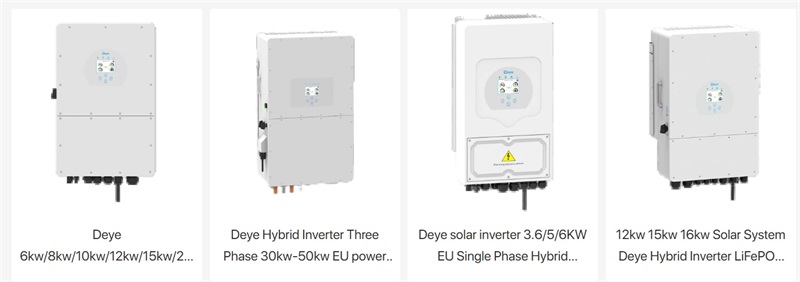As power electronic devices, inverters—like all electronics—face challenges from temperature. Especially in summer, high outdoor temperatures can affect inverter cooling, causing the surface structure to become hot to the touch. So, what heat dissipation designs does our inverter incorporate to address this issue?

The rated operating temperature of inverter components is closely related to thermal conductivity. The more balanced the internal and external temperatures, the better the heat conduction. The cooling principle of an inverter is similar to that of a water cup: the shell, as part of the heat dissipation system, conducts some of the internal heat. Using thermally conductive materials allows rapid heat transfer from internal components, lowering temperatures quickly and improving inverter performance and lifespan.
Inverter components have rated operating temperatures. If heat dissipation is poor, continuous operation causes heat to accumulate inside the enclosure, raising internal temperatures. Excessive heat reduces component efficiency and lifespan, increasing the risk of failure.
Current inverter cooling technologies include natural convection, forced air cooling, and liquid cooling, with natural convection and forced air cooling being the most common.
For low-power inverters, we use aluminium heat sinks to maximise surface area, enhancing air contact and rapid heat dissipation.
For higher-power models, in addition to heat sinks, we incorporate intelligently controlled cooling fans to enable forced-air cooling, accelerating airflow for superior heat dissipation.
Beyond heat sinks, the inverter shell itself contributes to heat dissipation by optimising heat transfer. The unibody enclosure design ensures tight contact between the heat sink and the shell, allowing component heat to transfer directly to the exterior. Additionally, heat from internal components is conducted through the air inside the enclosure to the shell, which then dissipates it externally, forming dual heat dissipation pathways.

For reliable and efficient power conversion solutions, explore our range of Deye Inverters at EV Lithium Charger. These advanced inverters feature:
✔ Optimised thermal management systems
✔ Intelligent cooling technology (forced air & passive cooling)
✔ Robust enclosure designs for enhanced heat dissipation
✔ Wide operating temperature range for all climates
Ideal for both residential and commercial applications, Deye Inverters ensure stable performance even in extreme conditions. Visit Now to discover how our solutions can power your energy needs efficiently.
The inverter shell, as part of the cooling system, effectively conducts some of the heat generated by components. In high summer temperatures, the shell may reach around 60°C, which is normal. As long as internal temperatures remain within safe limits, the inverter can continue operating at full power without issues.
Next:EVE Energy Unveils 836kWh Split Module Cabinet at SNEC 2025
Previous:CATL Unveils Next-Gen 587Ah LiFePO4 Energy Storage Cell Setting New Industry Benchmark
Contact Person: Miss. Kiki
| WhatsApp : | +8617763224709 |
|---|---|
| Skype : | +8617763224709 |
| WeChat : | +8617763224709 |
| Email : | kiki@lifepo4-battery.com |